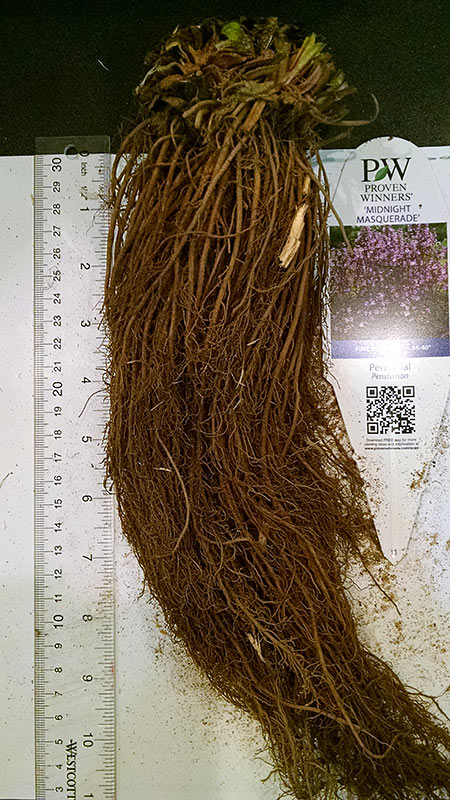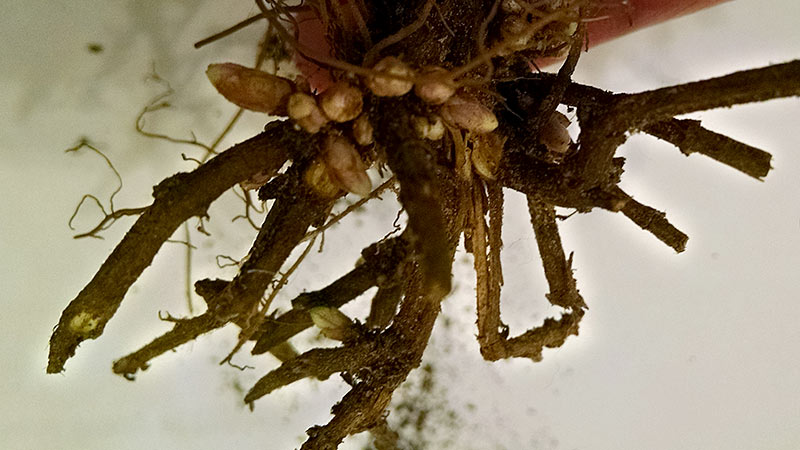When the Other Half volunteered his time this year at the Mayor’s Greening Initiative, a spring day in which our little city plants trees with the Parks department, he was sent home with a free tree. He texted me about what tree to choose for the Lot when I was heading into a Bare Roots class. While waiting for the class to start, I frantically looked up all the tree names he was sending to me. After a quick check with my instructor, we selected a serviceberry (Amelanchier laevis). For years I’ve been obsessing over getting a serviceberry tree, and now it was going to happen.
Bare Roots… For Tree Planting?
Cut to a couple of years ago when Dr. Linda Chalker-Scott was the keynote speaker at the Smart Gardening conference. If you want some hardcore science to side-dress your gardening, she is the lady to see. I enjoy reading The Garden Professors, an online garden/science blog to which she is a contributor. One of the topics she covered at the conference was root washing and pruning of container-grown and ball/burlap trees before planting to improve their chances to thrive.
As mentioned in my post about going bare root with perennials, the thought of doing this to a tree TERRIFIES me. Human emotion and science have a history of not always mixing very well. However, the more and more I read about Chalker-Scott’s experiments in root washing, the more it completely made sense (and had the science/results to back it). Then it just so happened, my friend Miss B had the opportunity to join instructor Bert Cregg of Michigan State University in a study of the cost and benefits of pre-plant root manipulation. So, fast forward to this past weekend and I’ve finally summed up enough courage to root wash the serviceberry before planting!
Behind the Potting Medium Curtain
After proposing the experiment to the Other Half and getting his okay, I set to work on the serviceberry. The tree we had received was in a container, so it wasn’t very huge or awkward to handle. Here’s what I found when I pulled the tree out of the container.
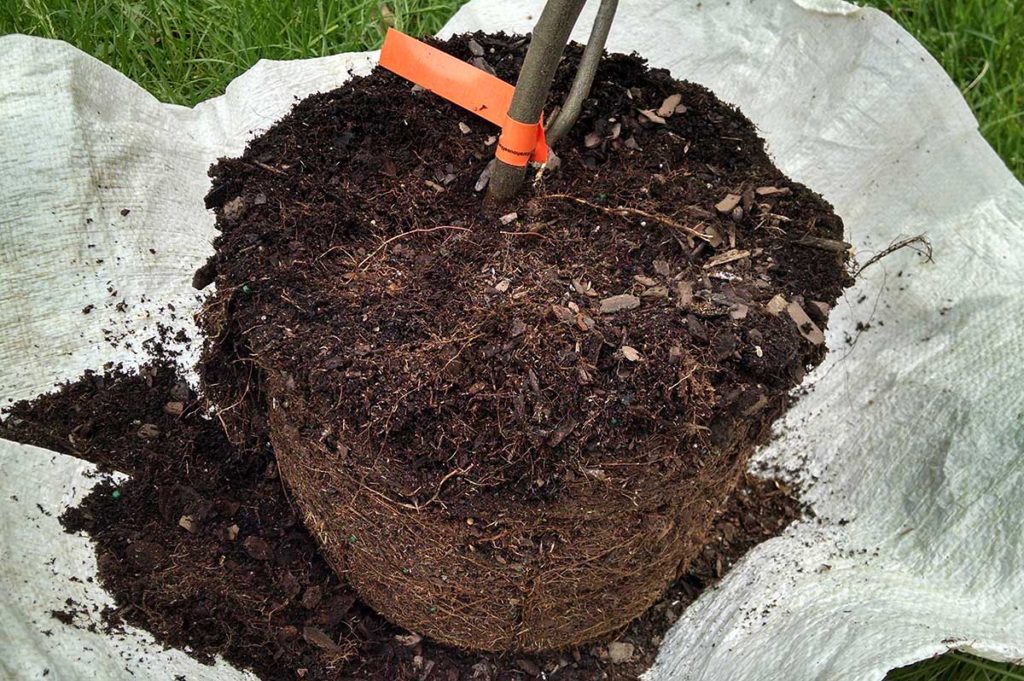
The roots didn’t look packed into the container and growing out the bottom, which is something I run into often when purchasing annuals in the spring. It did seem the tree was sitting too deep into the potting medium because the root flare, the area of the trunk where it begins to flare out into supporting roots, was non-existent.
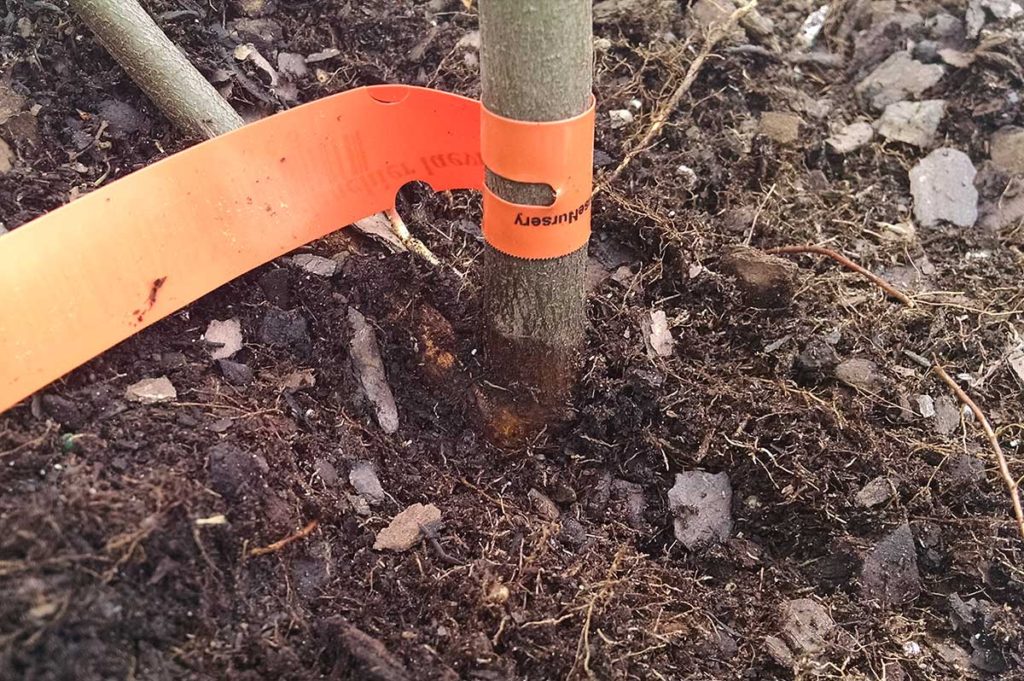
So, feeling a bit less anxious I would have to get aggressive with roots, I began to excavate in search of the root flare. This involved me tapping the root ball on a tarp to shake loose the potting medium. Soon I had a rat’s nest of roots refusing to let go of any more potting medium. UGH. I pulled out a tub and headed over to the outdoor tap. My shot at root washing was going to happen after all.
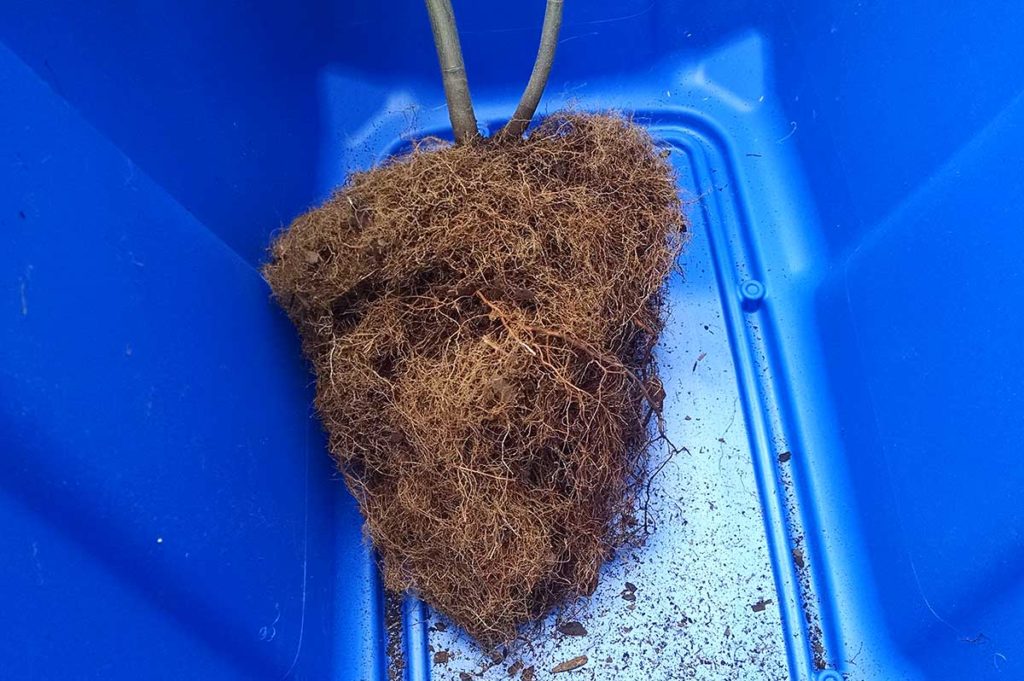
Finding the Root Flare on a Serviceberry
I began by pouring some water over the top of the root ball. As the water revealed more of the roots, I already noticed a problem. The side branch of the service berry had been under the potting medium for so long it had grown its very own roots! A watering can later and still no sign of a root flare. However, the trunk itself had grown roots. Did this tree even HAVE a root flare?! Was I missing something?

With curiosity winning over caution, I plunged the whole root ball into the container of water and began working the medium loose with my fingers. Finally, I found it. The root flare had been located. The flare is used as a guideline to plant a tree at correct depth. With the difference in coloring on the trunk as an indicator in the photo below, notice how deep this serviceberry was buried in the potting medium.
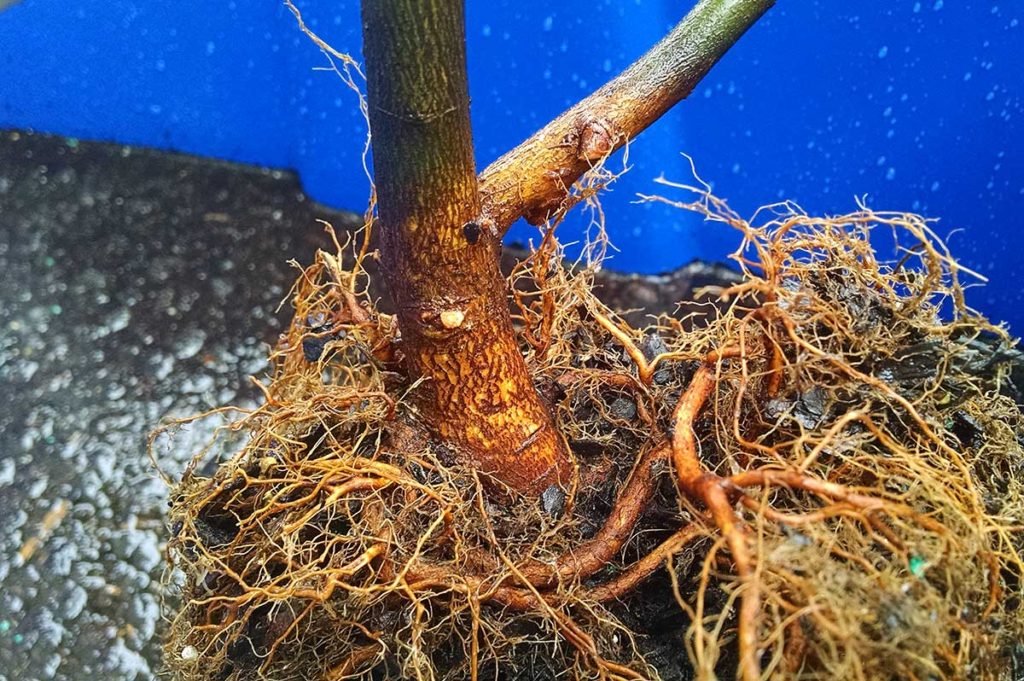
Correcting Girdling Roots
With the flare located, I set to work on pruning the roots. This was the part of my backyard experiment that really set me on edge. However, if left unaltered, the roots already bending and circling around the tree would continue to do so. The roots would thicken, become larger, and eventually strangle the tree like a self-made noose.
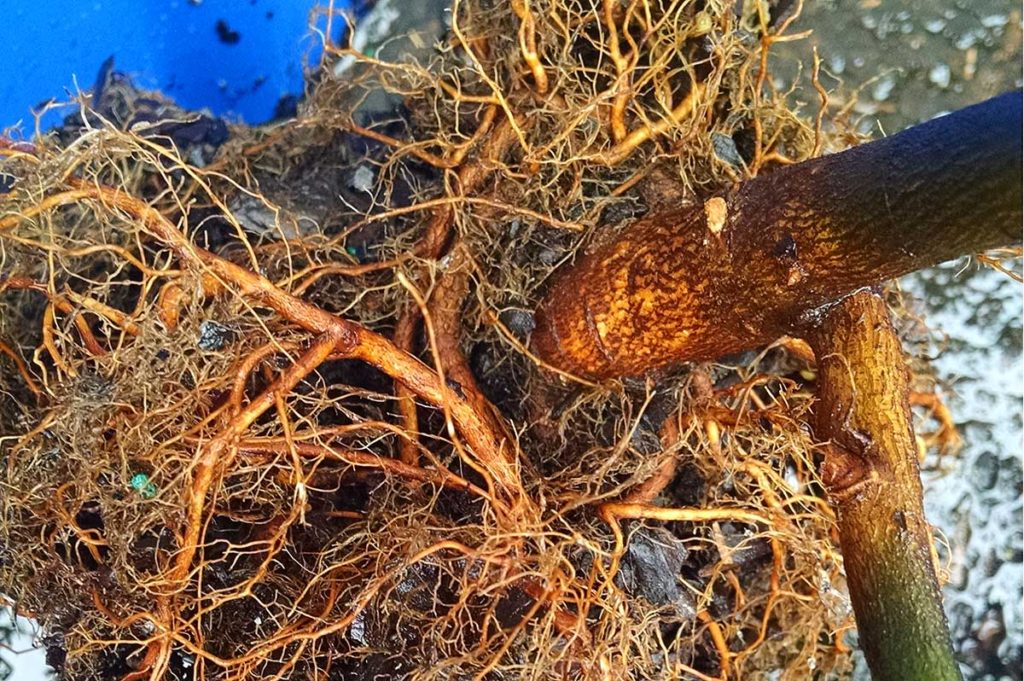
A bit of fussing with the roots now would allow the tree to grow an outward-branching root system. This healthier root systems in turn allots the tree a stronger chance of thriving moving forward. So I set to work removing roots with my pruners at the point they bent around the trunk. Since the container and tree were still small, this often meant removing the root where it emerged from the trunk.
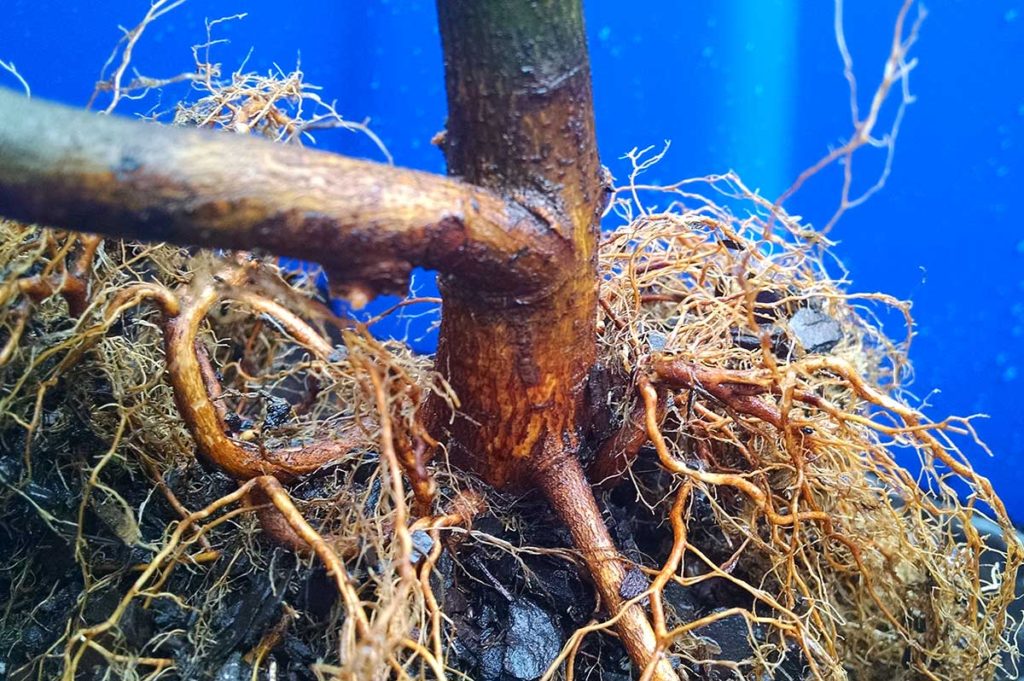
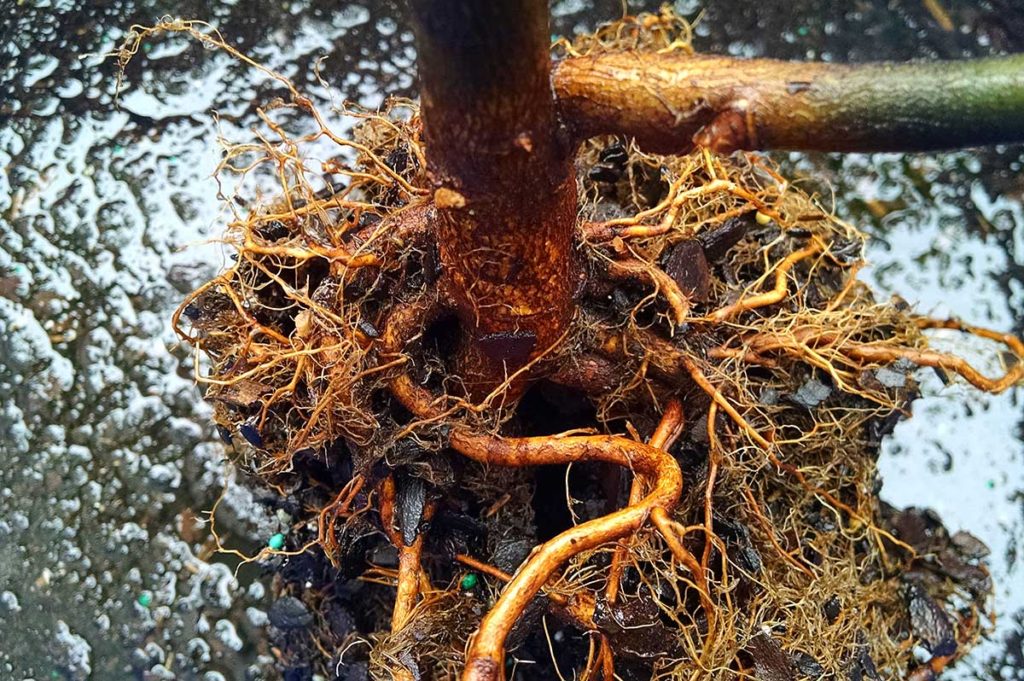

Eventually with a snip here and a snip there, the majority of the curving roots had been removed. I felt it was time to get this little tree planted in the garden.
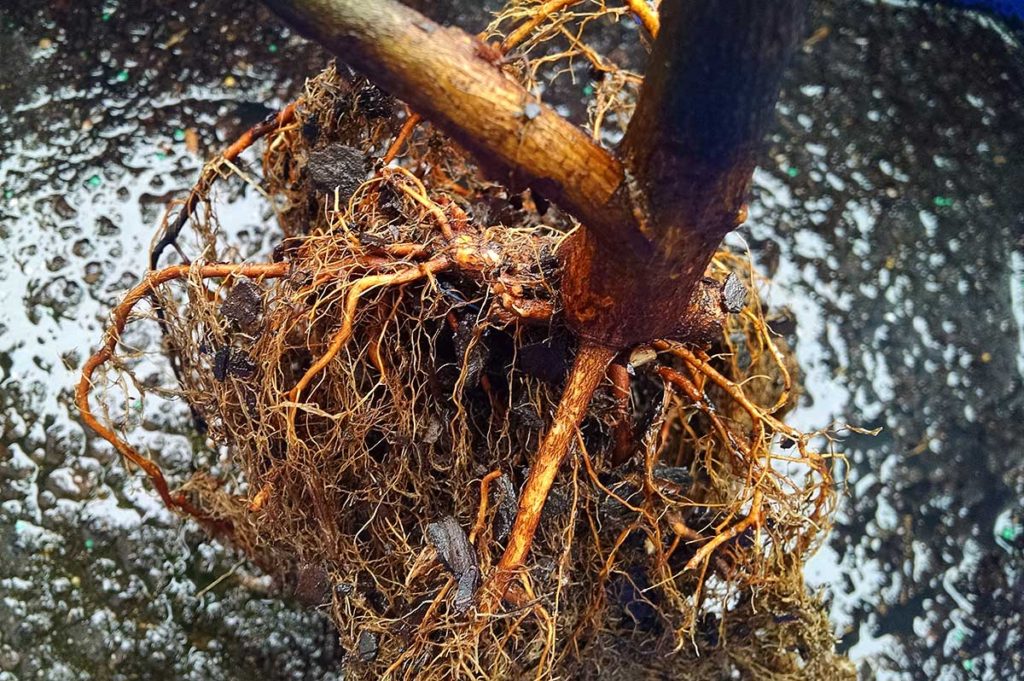
Bare Root Planting a Tree
I dug a wide hole deep enough for the root system to sit within, the roots splayed outward and slightly downward. The Other Half held the tree upright with the bottom of the trunk perched on a small mound of soil at the center of the hole. The root systems of trees don’t mimic the canopy underground. Instead, the roots of tree look as if they fill a shallow (in comparison to the height of the tree/canopy), wide dish. We used the newly exposed root flare as the marker for how deep to plant the serviceberry.
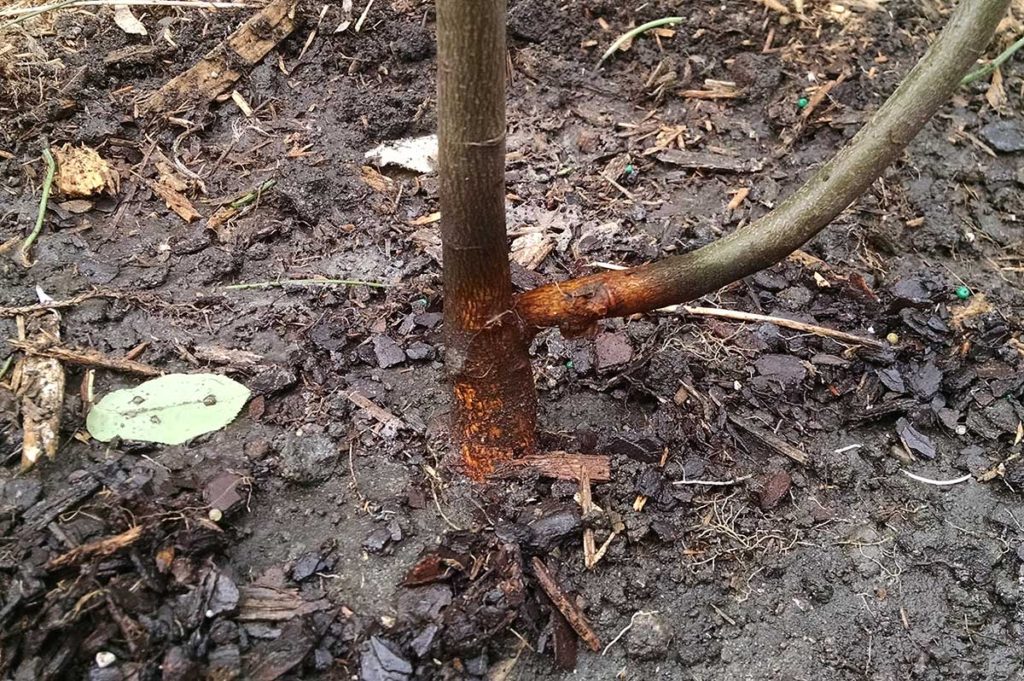
I didn’t add any compost or fertilizer to the planting hole. There are some great articles over at the Garden Professors blog about why it may not be necessary. The chips that had been sitting at the top of the container were dumped around the newly planted tree.
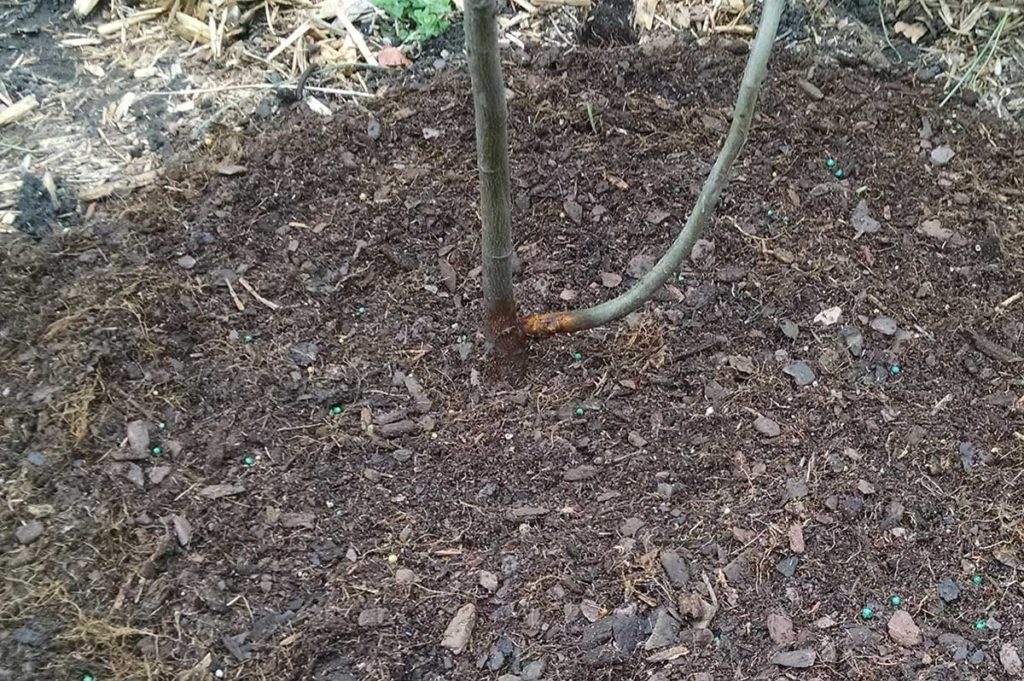
Then I added a nice layer of wood chip mulch to help hold in moisture and keep the soil cooler against the heat of the upcoming summer season. Now, Dr. Chalker-Scott would throw up a red flag here because she has run studies on the benefits of mulching with arborist chips. However, I still have not made time to locate a source for small quantities in our little city. Gardening always quite literally offers room to grow, right?
Monitoring a Bare Root Planted Tree
The serviceberry, with corrected roots, was now snug against native soil on The Lot. I needed a drink. The process of root washing and pruning took a lot longer than I had thought. However, I believe the main reason behind this to be my own nerves and hesitation.
SUMMER IS COMING and now it is our responsibility to baby this little tree until autumn. We will be giving it long, deep drinks of water. Since the tree will be stressed, it is more vulnerable to pests and diseases. I’ll be monitoring for this and will share anything I notice.
